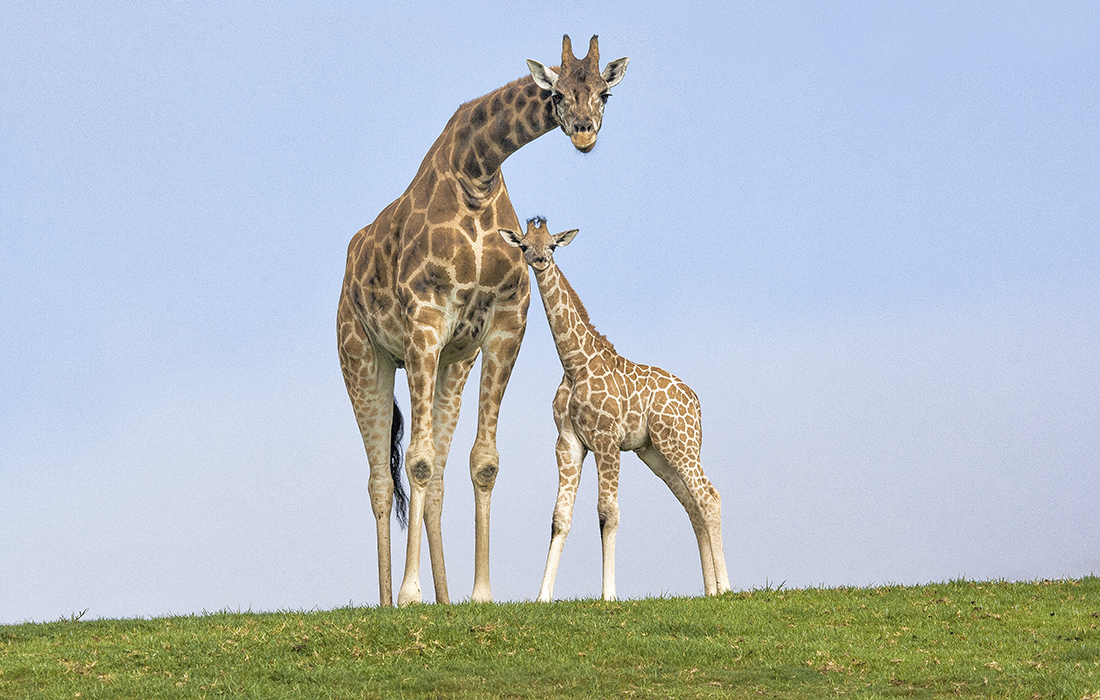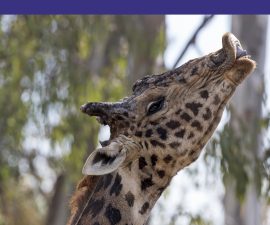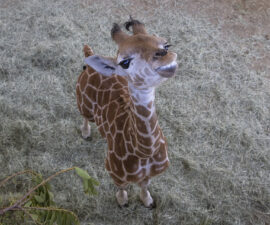BY Karyl Carmignani
PHOTOGRAPHY BY KEN BOHN
VIDEOGRAPHY BY Victor Schwanke
 While nearly all mammals from mice to elephants have seven vertebrae, the exceptions are sloths (from five to nine, depending on the species) and manatees (which have six).
While nearly all mammals from mice to elephants have seven vertebrae, the exceptions are sloths (from five to nine, depending on the species) and manatees (which have six).
There are two good reasons for an animal to stick its neck out: access to food and competition for mates. But long necks can be a deadly trade-off—that life-giving column of nerves, bones, airways, veins, and blood connecting the head to the body is a vulnerable part of the anatomy that can be quick-and-easy pickings for a predator. Long necks are nothing new to the Animal Kingdom. Some dinosaurs were famous for their driveway-long necks, including a Chinese sauropod that sported 19 vertebrae in its 50-foot-long neck. Fast-forward several million years, and it’s clear that long necks still give some species a leg up. These days, it’s the giraffe that is the quintessential long neck, with mature bulls achieving an eight-foot neck made up of a mere seven cervical vertebrae—the same number as most other mammals, including humans. No other living creature reaches even half the giraffe’s length; the ostrich has the next longest neck at around three feet.

Tall Tails
One good reason to evolve a longer neck is to minimize competition for food. Of course, there are other anatomical constraints, but if an animal can maximize its reproductive success, then even a risky trait, like a long neck, can thrive in the gene pool. In the case of giraffes, which live in sub-Saharan Africa where predators are plenty and food can be scarce, a long neck serves double duty. The animal can reach leaves and twigs high in the trees, and rival males use their long neck to spar with competitors for mating rights—a behavior aptly called “necking.” The male with the longer, stronger neck is more likely to win the battle and the “girl.” Female giraffes prefer this robust neck trait in a mate, so long necks persist in giraffe populations.
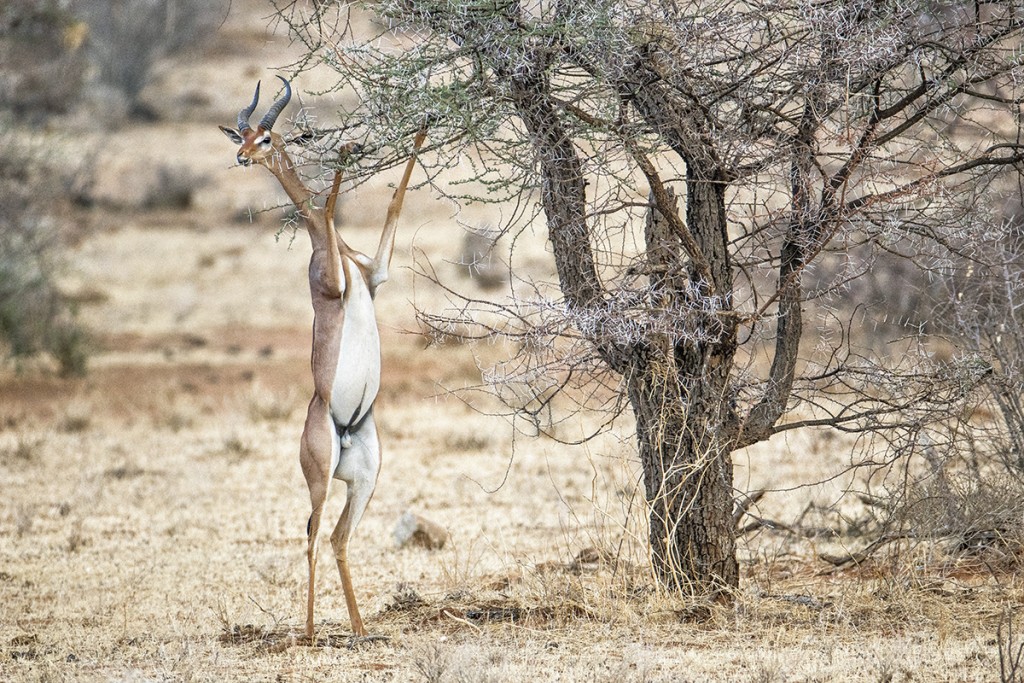
WHAT’S FOR SUPPER?
Gerenuks browse below giraffes and above the pint-sized dik-dik.
With giraffes able to reach two stories high in the trees for their food, that leaves layers of uncontested foliage below them. Meet the elegant and shy gerenuk, a type of long-necked antelope that is keenly adapted to its arid, thorny environment. This antelope rears up on its hind legs to reach its foliage feast eight feet off the ground, using its forelegs to pull the branches down to its mouth. It is a very unusual feeding technique! The pint-sized dik dik, so named for the female’s alarm call, is an herbivore the next size down, which browses below the gerenuk.
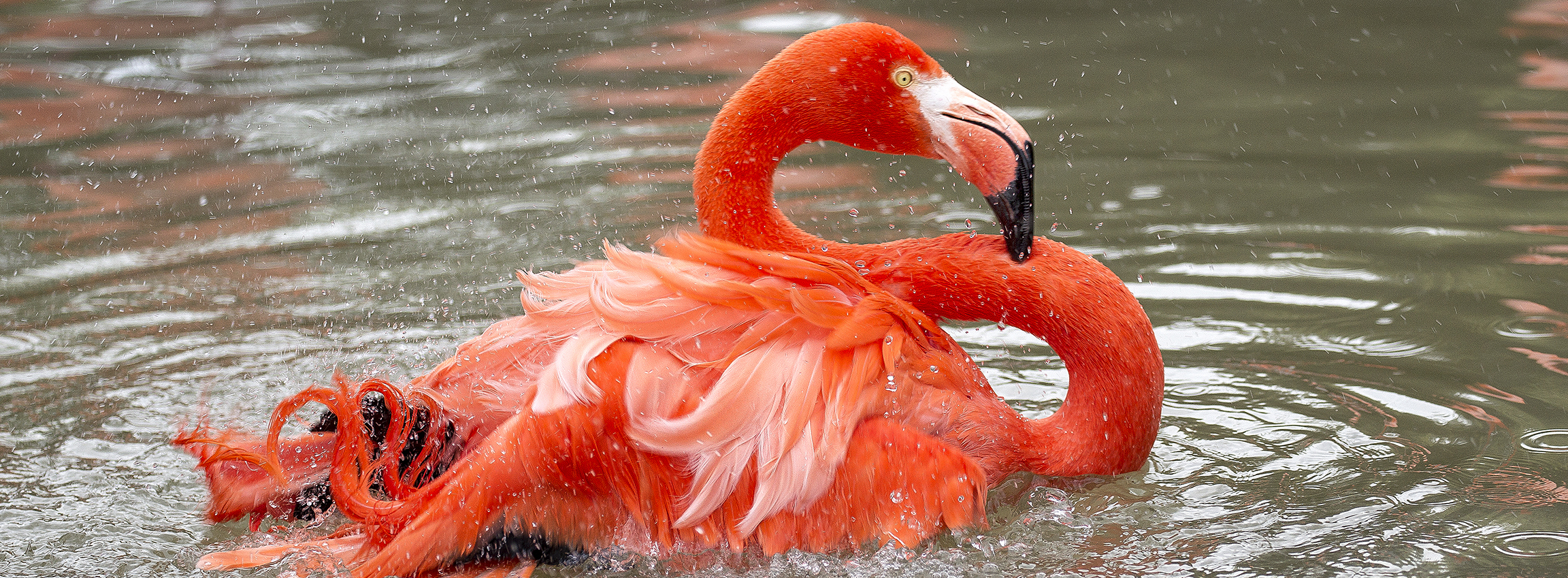
Don’t Crane Your Neck
There are many modern-day birds that make full use of their long, slender necks. Though nowhere near the size of those massive, mowing sauropods, birds like herons, swans, geese, and cranes, among others, possess similar skeletal features: hollow bones. Birds have more cervical vertebrae than other animals, so keeping the skeletal structure lightweight is key. Parrots possess 9 vertebrae while swans have 25 of these flexible bones, which enable them to reach around to groom their feathers. A long neck also comes in handy if you need to get your beak somewhere you don’t necessarily want the rest of your body to go—underwater, for instance.
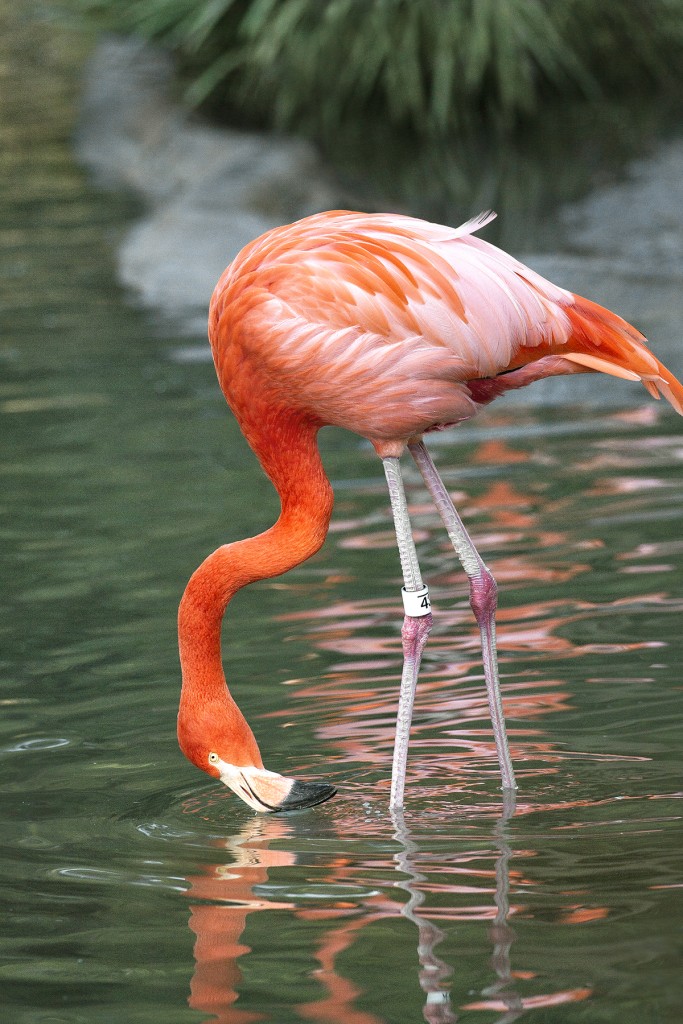
DIPPING DOWN FOR DINNER
The long and flexible neck of a flamingo is helpful with its filter feeding technique.
Flamingos have 19 elongated neck vertebrae, which allow for maximum movement and twisting. In flight, a flock of flamingos is a sight to behold, with the birds’ neck and legs stretched out straight as a train. Back on the ground at rest, the flamingo can configure its neck into an S-shape and sink its head into its feathers for an uninterrupted nap. Come mealtime, a flamingo stands in shallow water, lowering and tilting its beak below the surface to “filter feed,” sweeping its head back and forth to collect aquatic insects, crustaceans, mollusks, even algae, and occasionally small fish. Given the flamingo’s long legs, it makes sense for it to have a long neck to better reach prey, no craning required.
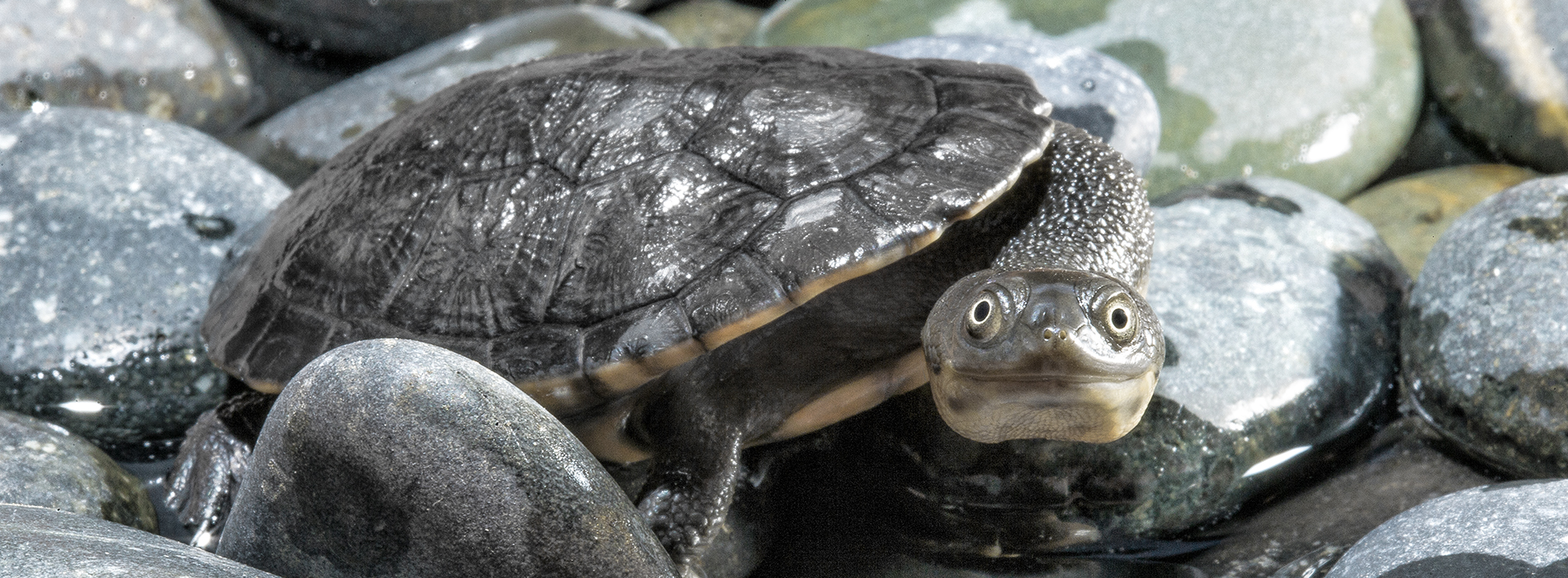
Slow, Steady, and Snapping
Imagine swimming stealthily underwater at night and trying to find your supper. For the Roti Island snake-necked turtle, the next best tool to a fishing spear is a neck nearly the length of its seven- to nine-inch-long carapace. This flexible feature helps this freshwater animal snap up small fish, tadpoles, and insects in the wink of an eye. When not in use, the lengthy neck is drawn in sideways, forming an S-shape. Hence, this turtle is a “side neck turtle,” unlike many other turtles that pull their heads straight back into the shell.
Despite its super-long and agile neck, this species has become “commercially extinct,” due to overcollecting for the insatiable pet trade. Locals report that another threat is feral pigs taking the turtle eggs before they hatch. Two to three populations of the snake-necked turtle remain in a tiny amount of suitable swampy habitat in a 27-square-mile area in eastern Indonesia, on Roti Island. As their numbers have fallen, rising demand for them by collectors has taken a dreadful toll on this species. It is time to stick our own necks out to save this unusual reptile!
MILKING IT
Sometimes keepers have to stick their necks out for giraffes. This little guy, Baridi, wasn’t able to nurse because of a severe infection at birth, but keepers helped him out with round-the-clock care and bottle-feeding.

